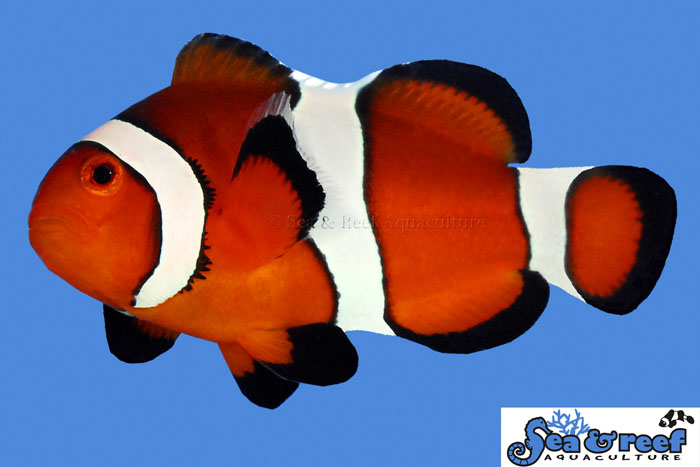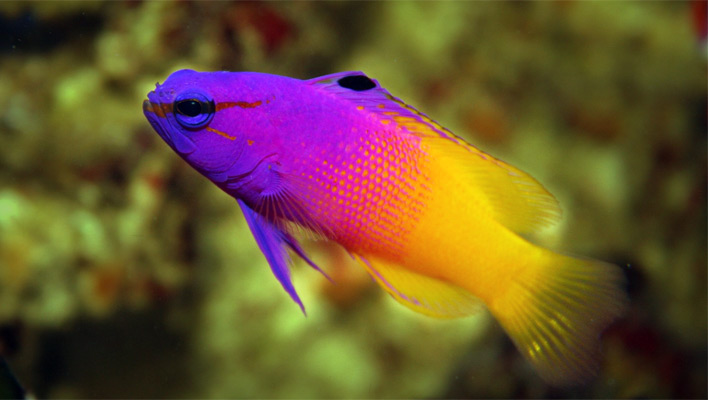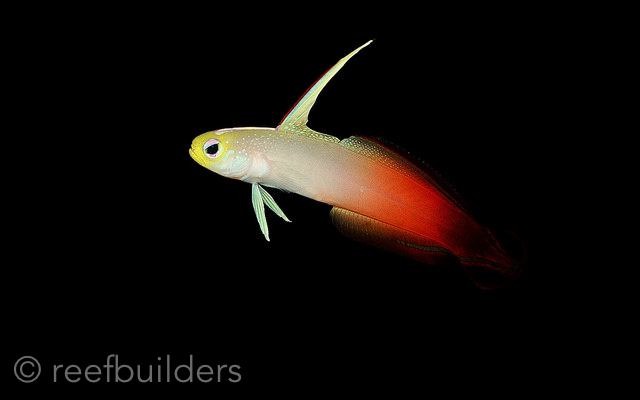Got a new saltwater aquarium for Christmas? New to reefing? Here are our five best reef-safe fish to get you started on your reef tank journey
Common Clownfish, Amphiprion ocellaris
Common clownfish and their close relative Percula clowns (A.percula) are some of the most iconic saltwater fish, famous for their orange and white coloration, for living in anemones, and of course as Nemo, in the Pixar animation. Choose two medium-sized tank-bred clownfish and one will become male and one female, forming a pair. Tank-bred clowns don’t need anemones but if you want a ‘nem’ as you gain more experience, choose a captive cloned Red Bubble tip anemone to go with them. Fit a cover net or lid to the tank as clownfish often jump out.

But avoid:
Maroon clowns, Tomato clowns, and Clark’s clownfish, as all grow large and become very aggressive. Only keep one pair of any clowns per tank.
Royal Gramma, Gramma loreto
Royal grammas are some of the most beautiful saltwater fish, sporting purple and yellow bicoloration as well as staying small, being reef-safe, and easy to keep. Royal Grammas come from the Atlantic Ocean where they hang around in caves and overhangs, so provide them with plenty of rockwork and they will never stray far from it. Two or more can be kept in large tanks, but just stick to one if you want to add one to a nano tank.

But avoid:
With near identical body shape and coloration to the Royal Gramma, the Royal dottyback, Pseudochromis paccagnellae is very aggressive, will attack other fish and eat shrimps. Avoid Magenta dottybacks too, for the same reason.
Sixline wrasse, Pseudocheilinus hexataenia
Sixline wrasses are brilliant utilitarian fishes that stay small, are colorful, active, and reef safe, but also do a great job of eating pests like flatworms which would otherwise predate and annoy your corals. They’re one of the best wrasses for smaller tanks, and probably the best wrasse for beginners.

But avoid:
Coris wrasses, which get really big and eat clean-up-crew, Cleaner wrasses which overgraze small fish in small tanks, and Leopard wrasses, which need mature tanks and experienced owners.
Firefish, Nemeleotris magnifica
Firefish are disease-resistant first fish that can be kept in smaller tanks, and with corals. Often kept together in fish stores, they are best kept singly in a tank with lots of rockwork where they can make a home and feel safe. All firefish can be kept the same way including purple firefish. Just make sure you install a cover net to prevent them from jumping out.

But avoid:
Tilefish, which look superficially similar but are much more fragile, are even more prone to jumping out and developing gas bubbles around their eyes.
Green Chromis, Chromis viridis
Green chromis can be a difficult sell to a new reefkeeper, as they look plain and need to be kept in groups, but they are inexpensive, easy to keep, peaceful and reef safe, and a group of them will provide movement and color in the upper water layers. Feed regularly using an autofeeder.

But avoid:
Aggressive, territorial damselfish like Domino damsels, humbugs, and groups of blue damsels as they just annihilate each other (and other fish,) via territoriality. They can stop algae grazers and wrasses from getting to rocks and corals too.


